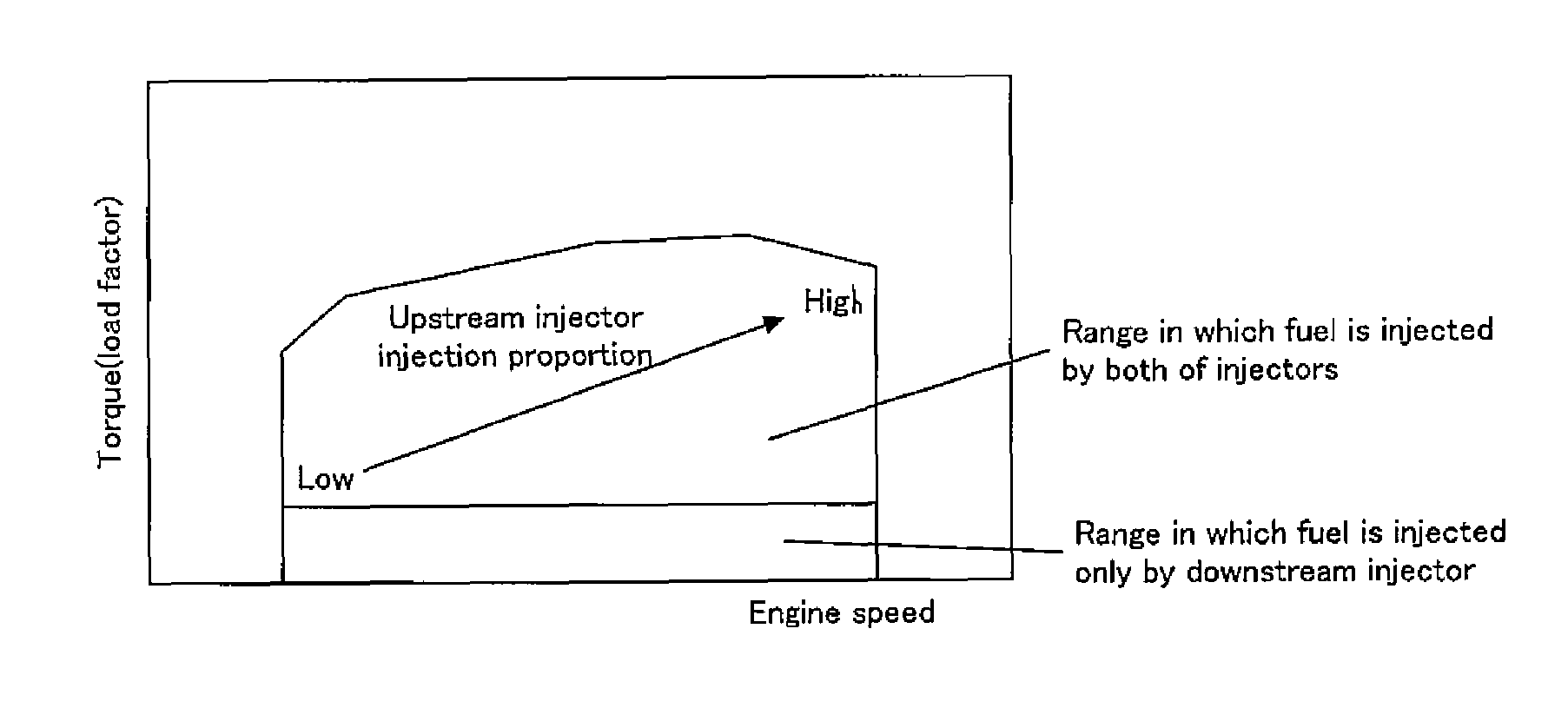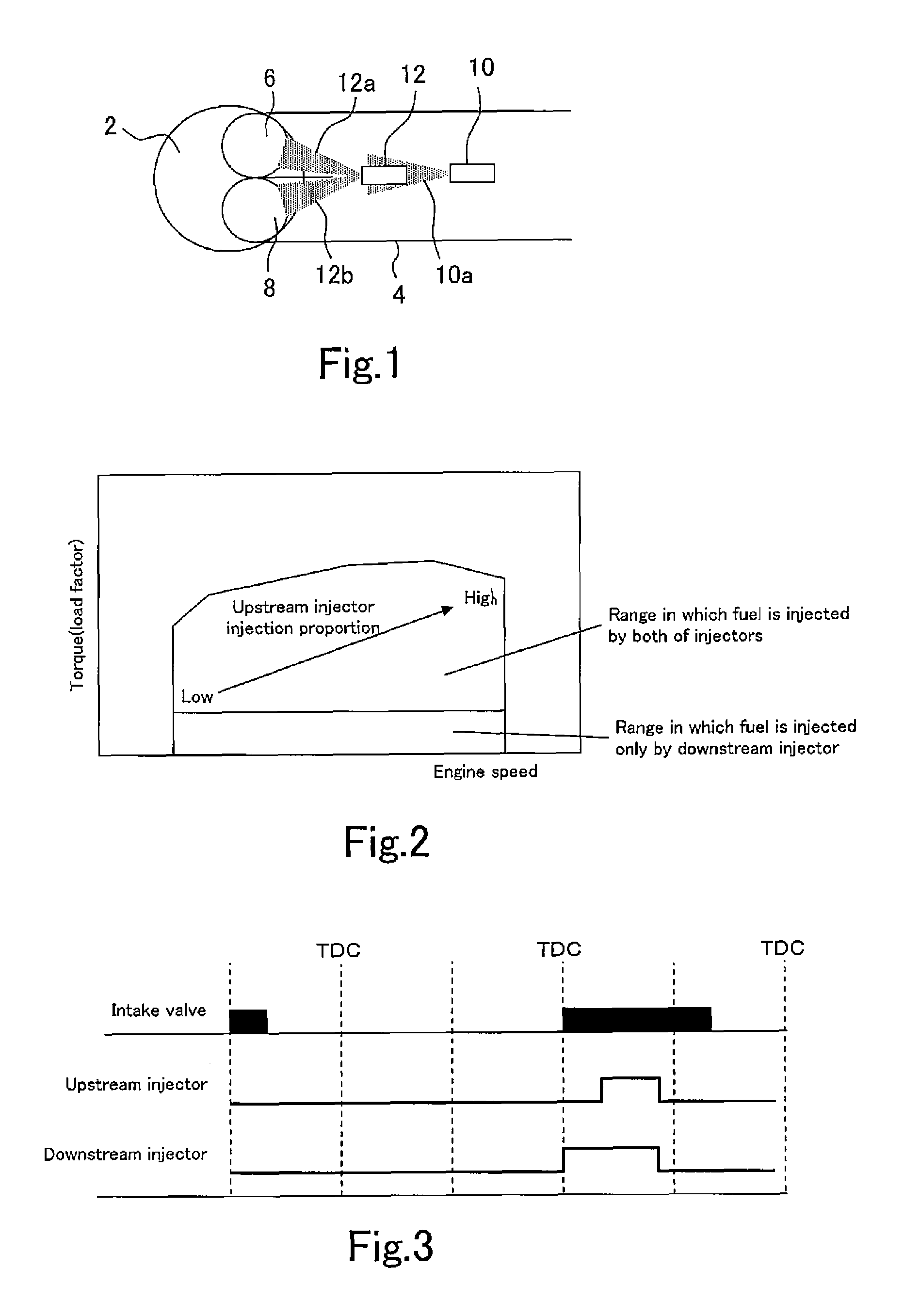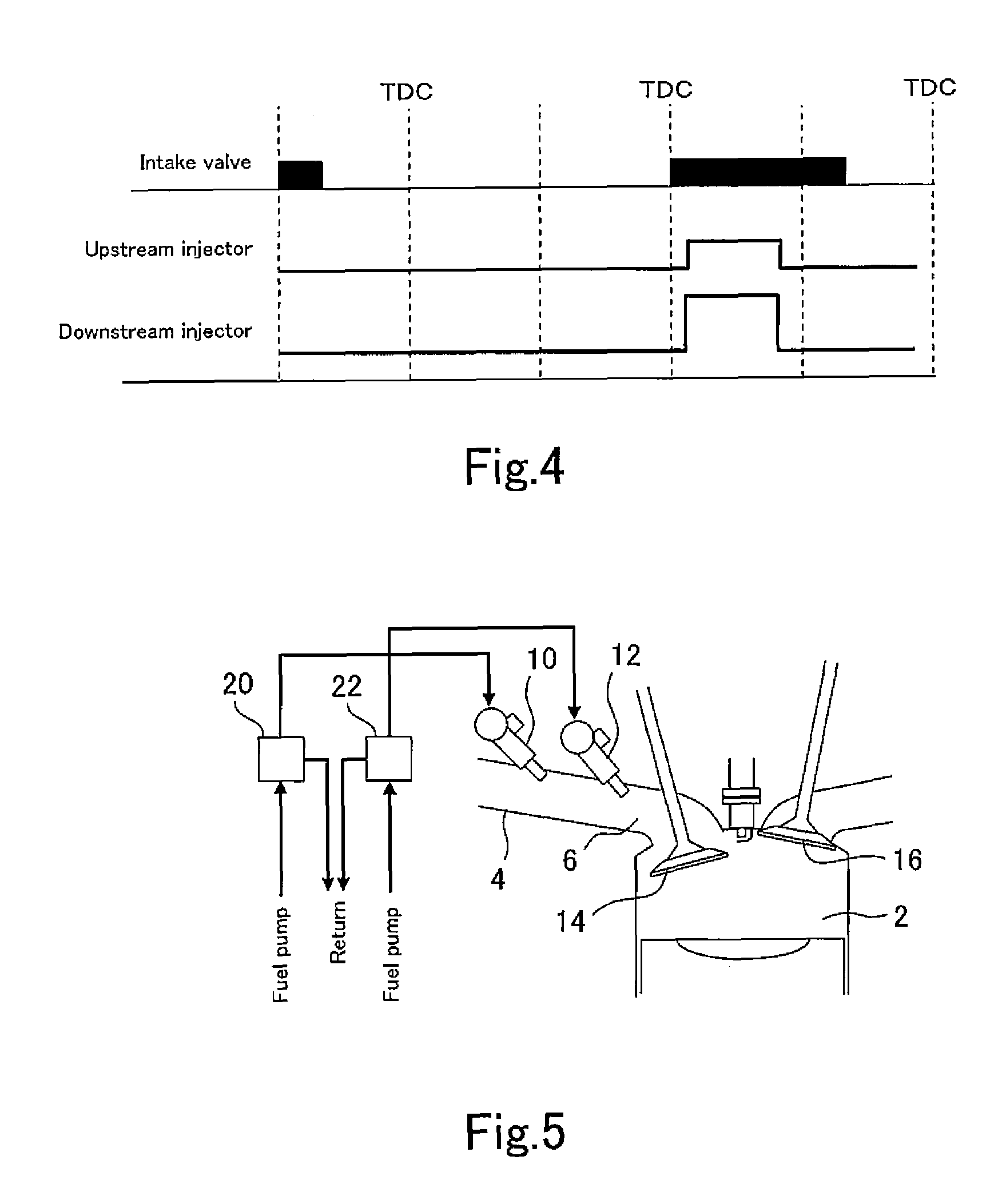Fuel injection control device for internal combustion
a control device and fuel injection technology, applied in the direction of electrical control, process and machine control, instruments, etc., can solve the problems of affecting the operation of the fuel injection control devi
- Summary
- Abstract
- Description
- Claims
- Application Information
AI Technical Summary
Benefits of technology
Problems solved by technology
Method used
Image
Examples
embodiment 1
[0024]Embodiment 1 of the present invention will now be described with reference to the drawings.
[0025]An internal combustion engine to which a fuel injection control device of the present embodiment is applied is an internal combustion engine for an automobile. More specifically, the internal combustion engine is a premixed combustion-type four-stroke, one-cycle reciprocating engine. The fuel injection control device of the present embodiment is implemented as one function of an ECU that controls the overall operations of the internal combustion engine.
[0026]FIG. 1 is a view that illustrates a configuration in an area around an intake port of the internal combustion engine to which the present fuel injection control device is applied. In the internal combustion engine to which the present fuel injection control device is applied, a distal end of an intake pipe 4 branches into two intake ports 6 and 8, and the respective intake ports 6 and 8 are connected to a combustion chamber 2. ...
embodiment 2
[0033]Embodiment 2 of the present invention will now be described with reference to the drawings.
[0034]Similarly to Embodiment 1, a fuel injection control device according to the present embodiment is applied to an internal combustion engine that is configured as shown in FIG. 1. However, according to the present embodiment, the flow rate of the second injector 12 on the downstream side is made greater than the flow rate of the first injector 10 on the upstream side. A timing chart that illustrates injection periods of the respective injectors 10 and 12 when both of the injectors 10 and 12 are actuated in this case is shown in FIG. 4. As shown in the timing chart, the fuel injection period required by the second injector 12 can be shortened by increasing the flow rate of the second injector 12. Consequently, the fuel injection periods at the two injectors 10 and 12 can be made approximately the same, and it is possible to unify the control between the two injectors 10 and 12.
[0035]N...
embodiment 3
[0036]Embodiment 3 of the present invention will now be described with reference to the drawings.
[0037]Similarly to Embodiment 1, a fuel injection control device according to the present embodiment is applied to an internal combustion engine that is configured as shown in FIG. 1. However, a feature of the internal combustion engine to which the present fuel injection control device is applied is the configuration of a fuel supply system thereof. In the present embodiment, the fuel supply system of the internal combustion engine is configured as shown in FIG. 5. FIG. 5 illustrates a state in which an intake valve 14 is open and an exhaust valve 16 is closed, that is, the state of the internal combustion engine at the time of an intake stroke. In FIG. 5, components or sites that are the same as components or sites shown in FIG. 1 are denoted by the same reference numerals as in FIG. 1.
[0038]As shown in FIG. 5, the internal combustion engine to which the present fuel injection control ...
PUM
 Login to View More
Login to View More Abstract
Description
Claims
Application Information
 Login to View More
Login to View More - R&D
- Intellectual Property
- Life Sciences
- Materials
- Tech Scout
- Unparalleled Data Quality
- Higher Quality Content
- 60% Fewer Hallucinations
Browse by: Latest US Patents, China's latest patents, Technical Efficacy Thesaurus, Application Domain, Technology Topic, Popular Technical Reports.
© 2025 PatSnap. All rights reserved.Legal|Privacy policy|Modern Slavery Act Transparency Statement|Sitemap|About US| Contact US: help@patsnap.com



